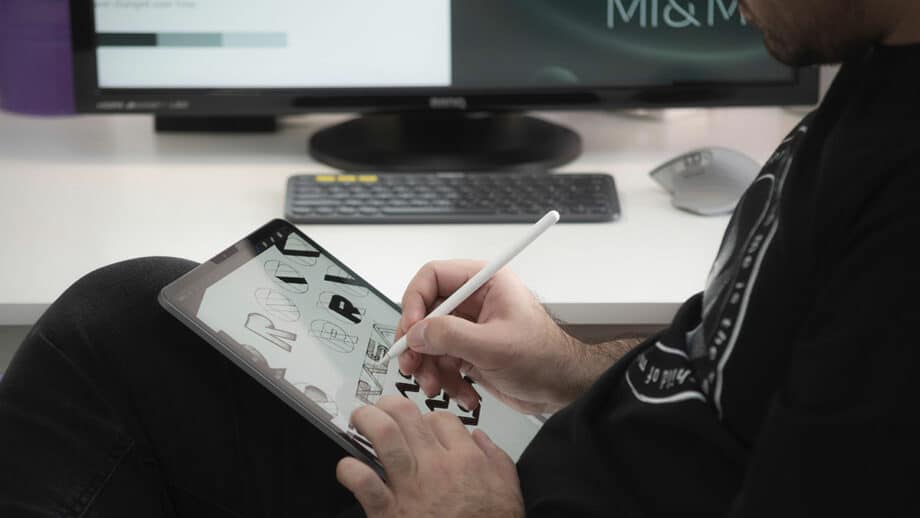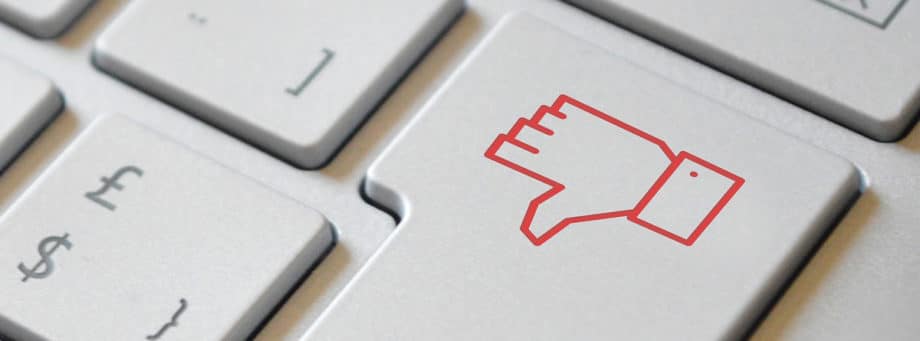Choosing the right tablet isn’t easy. With so many options, like Apple iPads, Android tablets, and Windows tablets on the market, how do you know which one fits your needs?
Maybe you’re looking for a device to browse the web from your couch. Or perhaps you need something powerful for work or creativity on the go.
I once had to decide which tablet to buy for my graphic design work. The choice was tough because each one had something tempting about it.
iPads have this cool Apple Pencil that feels like magic when drawing, while some Android devices come with an S Pen perfect for sketching on the go without charging it first! Then there are Windows tablets that let me run full desktop programs – super handy for editing photos or videos without going back to my big computer at home.
In the end, I went with an iPad because of its high-res screen and app selection but hey, everyone’s story is different!
Our blog will walk you through all this – what makes these tablets special, their strengths and weaknesses (think battery life to app stores), and just everything!
Your perfect match is closer than you think… Ready to find out?
Apple iPads

Diving straight into the heart of Apple’s tablet world, we find an impressive array of options – each designed to cater to different needs and preferences. The iPad has evolved far beyond its origins as a simple browsing device.
Today, it stands tall in a lineup that features heavy hitters like the iPad Pro, the sleek iPad Air, and the versatile 10th-generation iPad. These aren’t just variations in size or color; they’re distinct choices for users ranging from digital artists who crave the precision of the Apple Pencil to students needing a reliable companion for their studies.
My personal journey with iPads began with skepticism – I couldn’t fathom how much difference there could be within one brand’s offerings. Yet, each model under this umbrella serves a unique purpose.
Take the iPad Pro with its edge-to-edge Liquid Retina display making every image stunningly crisp – a dream come true for professionals in graphical work or video editing. Then there’s the iPad Air, lighter than air itself (well, not literally), which boasts speed and power without compromising on portability – it was my constant travel buddy during last year’s summer escapades.
And let’s not forget about compatibility with useful accessories like Smart Keyboard Folio or Magic Keyboard – they transform these tablets from mere media consumption devices into productive powerhouses capable of challenging traditional laptops on many fronts.
Features of Apple iPads

Choosing the right tablet can really change your tech game. So, if you’re eyeing an Apple iPad, let’s talk about why it might just be the perfect pick for you. Here are some standout features:
- iPadOS: This is like the brain of the iPad. It’s super smooth and lets you do a ton of stuff at once without any hiccups. I’ve flipped between games and work apps without skipping a beat.
- Design and Build Quality: iPads look sleek and feel sturdy in your hands. The moment you pick one up, you can tell Apple didn’t skimp on materials. It’s got that premium vibe that makes you proud to pull it out at a coffee shop.
- Performance and Speed: These tablets are lightning-fast. Whether I’m editing videos or playing graphics-heavy games, my iPad keeps up without any lag.
- User Interface and Experience: Everything feels intuitive on an iPad. Swipe here, tap there — it all just works seamlessly, making even new users feel like pros.
- App Store and Software Availability: The App Store is like a treasure chest filled with apps for everything imaginable — from drawing to productivity tools, they’ve got it all.
- Integration with Other Apple Devices: This is magic for anyone who already uses Apple products. My iPad talks to my iPhone and Macbook effortlessly, sharing files through AirDrop or syncing photos without me doing anything.
- Security and Privacy Features: With Face ID and Touch ID, only you can unlock your device, which gives you peace of mind knowing your data is safe.
- Price Range and Value for Money: Sure, iPads aren’t cheap, but considering how long they last and what they can do, it feels worth the investment.
Each feature adds up to make using an iPad a great experience every time I power mine on!
Pros of Choosing an iPad

Choosing an iPad comes with its own set of perks. Oh boy, and these perks are pretty sweet.
- Apple’s ecosystem is like a big, happy family where everything works together smoothly. Your iPad can be best friends with your iPhone, MacBook, and even your Apple Watch. Sharing files through AirDrop is as easy as pie, and answering texts or calls on your iPad? Yep, you can do that too.
- iPads are known for having top-notch build quality. They feel solid in your hands — not like they’re going to fall apart if you look at them wrong. Plus, their displays are so clear and bright that watching videos or playing games is a real treat.
- The App Store is this huge playground filled with more apps than you could ever imagine needing. And we’re talking about quality apps tailored for the iPad’s screen size — not just blown-up phone apps.
- Updates galore! Apple keeps its tablets updated with the latest software for many years after release. This means your iPad stays speedy and secure, long after its Android pals have been left in the dust.
- Finally, there’s something special about using an Apple Pencil with an iPad (especially if you grab one of those newer models). Whether you’re drawing, taking notes, or just doodling around, it feels so natural and responsive; like the pencil is just an extension of your hand.
So yeah, picking an iPad has its benefits — from how well it plays with other gadgets to the sheer joy of using one.
Cons of Choosing an iPad

Picking the right tablet can be tough. iPads might seem like a great choice, but they have their downsides too.
- Your iPad won’t let you change much. It comes as it is, so don’t expect to make it look or work exactly how you want.
- Apple likes to keep things in its family. This means your iPad works well with other Apple products, but not so much with anything outside of that world.
- Moving files around on an iPad? Prepare for a headache. The file system is pretty locked down, which can be annoying if you’re used to drag and drop.
- Want more storage? Too bad. iPads don’t have slots for extra memory cards.
- Doing a bunch of things at once on an iPad can be tricky. It’s made for one thing at a time, so multitaskers might find it limiting.
- iPads aren’t cheap, and the price tag might make you think twice, especially if you’re looking for good value.
So there you have it – a few reasons why an iPad might not be the best pick for everyone out there shopping for a new tablet.
Android Tablets

So, you’ve considered the ups and downs of choosing an iPad. Now, let’s shift gears and peek into the world of Android tablets. These gadgets bring a whole new level of customization to your fingertips.
Unlike their Apple counterparts, Android tabs allow users to tweak just about everything – from the home screen layout to installing apps from sources outside of the Google Play Store.
They’re the Swiss Army knives in the tablet universe.
Major players like Samsung, Lenovo, and Huawei have thrown their hats in the ring with models that cater to every need and budget. For instance, Samsung’s Galaxy series tablets come loaded with features such as high-resolution screens for those Netflix binges or sketching out your latest ideas with an S-Pen on devices like the Samsung Galaxy Tab S7+.
And here’s a fun tidbit: you can expand storage space on most Android tablets using microSD cards – a big plus if you’re always running out of room for all your photos and videos.
Features of Android Tablets

Moving from the broad range of Android tablet options to the features that make them stand out, let’s dive into what makes Android tablets a choice worth considering. These gadgets come packed with various perks that cater to different users’ needs. Here’s a rundown of these features, based on my personal journey through the world of tablets.
- Android OS: The heart of any Android tablet is its operating system (OS). This software makes your tablet work. It’s like the brain that tells everything else what to do. My tablet keeps things running smoothly and lets me play games, watch videos, and more.
- Design and Build Quality Across Brands: From slim and sleek models to more rugged designs for outdoor use, there’s an Android tablet for every taste. I’ve held many in my hands, and each brand brings its own style to the table — quite literally! Some are light and easy to carry, while others feel sturdy enough to survive a drop.
- Performance and Speed Variability: Just like people, tablets come in all different levels – fast and slow. Some have big brains (processors) that can handle lots of tasks at once without slowing down — perfect for games or editing photos.
- User Interface and Experience: Using an Android tablet feels natural to me. The way you touch the screen to open apps or scroll through pages is smooth. Each manufacturer has its own twist on this, ensuring there’s something for everyone.
- Google Play Store and App Availability: If you’re like me and love trying new apps, Android tablets are your playground! With access to millions of apps for work, play, learning — you name it; it’s like having a giant digital toolbox right at your fingertips.
- Customization and Personalization Options: This is where Android truly shines for gadget lovers who enjoy making their devices uniquely theirs. You can change almost everything about how your tablet looks and works — from wallpapers to widgets that give you info at a glance.
- Integration with Google Services: For someone deeply tied into Google’s ecosystem like myself — think Gmail, Docs, and Drive — an Android tablet feels like an extension of all those services. It syncs up seamlessly, making sure I’m always connected with my files and emails wherever I go.
- Security and Privacy Features: Keeping our digital lives safe is big business these days; thankfully, Android tablets come equipped with various tools to protect our information from nosy folks or malicious software looking to cause trouble.
- Price Range and Value for Money: Last but importantly – money matters! In my quest for the perfect device without breaking the bank, I found that Android tablets offer a wide price range that doesn’t skimp on quality or performance.
Pros of Choosing an Android Tablet

So, we just talked about what makes Android tablets unique. Now, let’s look at the bright side of getting one for yourself. Here are the big wins when you go Android:
- Your wallet will thank you – Android tabs come in all price ranges. I remember snagging a cool one without emptying my bank account. It was a game-changer.
- Make it yours – The customization on these things? Unreal. I switched up my home screen and made it superhero-themed because why not? You can’t do that on every tablet.
- No “storage full” headaches – Got too many apps or photos? Just pop in an SD card. Yep, expandable storage is a real hero here.
- All files are welcome – Ever tried opening a weird file format only to see an error message? Happens less with Androids because they play nice with lots of file types.
- App paradise – Google Play Store has everything. Found this quirky game last week and I’m hooked! So many apps, so little time.
- Plug in anything – Need to connect a camera or a mouse? Most Android tablets have USB-C ports making life so much easier.
- BFFs with Google services – If you’re all about Gmail, Google Drive, or YouTube, an Android tablet feels like home since it links up smoothly with these services.
Choosing an Android tablet means getting more freedom to use your device how you want, from changing how it looks to adding more storage when you need it. Plus, it’s kind of the pocket!
Cons of Choosing an Android Tablet

Choosing the right tablet can be a tough call. Android tablets come with their own set of drawbacks, and I’m here to walk you through some major ones.
- Productivity might not be their strong suit. Unlike iPad or Windows tablets, Android ones can struggle with tasks that require heavy lifting. This means if you’re planning to work on big projects or use complex apps, you might hit a snag.
- Software updates? Good luck! Older models often get left in the dust, missing out on the latest features and security fixes. This means your tablet could become outdated quicker than you’d like.
- The app paradise isn’t as lush here. Sure, there are plenty of apps to choose from. But when it comes to those tailored for tablets, the selection narrows down fast. You might find yourself wishing for more options that truly make use of your device’s capabilities.
- Speaking of security, it’s a bit like walking on thin ice. The open nature of the Android platform means it’s easier for bad actors to exploit vulnerabilities. So, keeping your data safe becomes a tad more complicated.
- Battery life could be better – way better, actually. Compared to its competitors, an Android tablet often finds itself running out of juice faster than you can say “low battery.”
- The overall feel just doesn’t have that wow factor sometimes seen in other tablets. If user experience is high on your list, Android tablets may leave you wanting more refinement and fluidity in navigation and design.
- Lastly, let’s talk accessories – or the lack thereof. Finding that perfect keyboard or stylus specifically made for your model can be like searching for a needle in a haystack.
Windows Tablets

Windows tablets blend the line between laptops and traditional tablets, offering a full PC experience that fits in your hands. These devices run on the Windows OS, which means they can handle Microsoft Office apps and other desktop software with ease – a big win for anyone who needs to work on the go.
The Surface Pro series stands out as a prime example; it’s essentially a notebook without the bulk, thanks to its detachable keyboards. This makes them an excellent choice for professionals who are always moving but still need powerful computing capabilities.
Features like hotkeys, pen support for artists and note-takers, and compatibility with monitors extend their versatility further. They seamlessly bridge entertainment and productivity – imagine streaming your favorite shows in HDR or sketching out design ideas with precision.
Plus, models equipped with high refresh rate displays make web browsing fluid and visually pleasing. On top of all this goodness is OneDrive integration for easy access to files across devices – say goodbye to data loss fears.
Features of Windows Tablets

So, we just talked about what makes Windows tablets unique in the world of tablet PCs. Now let’s dive into the specific features that set them apart. These devices blend the power of a desktop computer with the portability and touch-screen interface of a tablet.
- Windows OS: Every Windows tablet runs on the Windows operating system. This means you get a desktop-like experience, complete with all the multitasking and productivity tools you’re used to. I’ve found switching between tasks on my Windows tablet as easy as on my PC.
- Design and Build Quality: These tablets don’t skimp on design or materials. They often have sleek, durable bodies that can withstand daily use. The high-quality build also ensures they feel stable in your hands or on your lap.
- Performance and Speed: With powerful processors at their heart, Windows tablets handle everything from browsing to heavy-duty tasks like video editing without breaking a sweat. My own device boots up in seconds and loads apps just as fast.
- User Interface and Experience: The touch-friendly interface blends well with traditional keyboard and mouse inputs, offering flexibility in how you interact with your device. I appreciate being able to attach a keyboard for long typing sessions.
- Microsoft Store and Software Availability: Unlike other tablets, Windows devices access a vast library of applications through the Microsoft Store, including professional-grade software like Adobe Photoshop or Microsoft Office.
- Integration with Microsoft Services: If you’re already using services like OneDrive or Microsoft Office, a Windows tablet will feel right at home. It syncs seamlessly across devices, keeping files and data at your fingertips wherever you go.
- Security and Privacy Features: With built-in security measures like Windows Defender and support for advanced encryption protocols, these tablets offer peace of mind when it comes to protecting your data.
- Price Range and Value for Money: While generally pricier than Android tablets, Windows tablets offer significant value thanks to their robust features and capability to replace a laptop for many users – mine included!
Each feature here isn’t just listed from observation but comes from firsthand experience using a Windows tablet as both my leisure companion and workhorse when away from my desk setup!
Pros of Choosing a Windows Tablet

Moving on from the features of Windows tablets, let’s talk about why you might want to pick one. Windows tablets come packed with reasons that could sway your decision. Here are some pros that stand out:
- Works Like Your PC: One big win is how Windows tablets run full versions of software. This means they work just like your laptop or desktop. You can use Microsoft Office to get work done anywhere. I’ve edited PowerPoint slides on a bus ride home!
- All About Ports: More ports mean more ways to connect stuff. Think printers, flash drives, and external hard disks. It’s like having a Swiss Army knife; so handy!
- Flexibility King: These tablets switch between touch-screen and traditional desktop view seamlessly. It makes multitasking a breeze. I once juggled an Excel sheet, a PDF document, and an email chat all at once without breaking a sweat.
- Budget-Friendly: Compared to iPads, many Windows tablets are easier on the wallet for what you get.
- Customize Your Heart Out: You can change settings and arrange things however you like them on a Windows tablet, much more than on iPads or Android tablets.
- Connectivity Champion: With options like Microsoft OneDrive and Dropbox, sharing files across devices is super easy.
- Avoid Data Disasters: They have built-in data loss prevention tools that keep your important files safe even if you slip up and delete something by accident.
- More Software Options: There’s a ton of software available for Windows that covers everything from creativity apps to games.
Choosing a tablet isn’t just about picking hardware; it’s about choosing an experience that fits your life best – whether you’re typing up reports for work, creating digital art, or connecting with friends and family online.
Cons of Choosing a Windows Tablet

Picking out a tablet can be a bit like choosing your favorite ice cream flavor – lots of options, but not all of them will leave you smiling. Windows tablets bring some unique flavors to the table, sure, but they also come with their own set of downsides.
- Compatibility troubles – Some software and apps just don’t play nice with Windows tablets. I once tried to get my favorite drawing program running on a friend’s tablet, only to find out it was more like trying to fit a square peg in a round hole.
- Learning curve – The Windows interface can feel like learning a new language if you’re used to something else. My mom got a Windows tablet and called me every day for a week trying to figure out where everything was.
- Battery life blues – These tablets often run out of juice faster than their Android or iPad cousins. Planning to watch movies on a long flight? Better pack that charger, or you might be staring at the back of the seat in front of you instead.
- Limited app choices – Imagine walking into an ice cream shop and finding they only have three flavors. That’s what the app selection can feel like on a Windows tablet sometimes.
- Virus vulnerability – Just like computers, these tablets can catch colds – well, viruses and malware, actually. You’ll need to be extra careful about what you download or risk getting sick.
- Pricey proposition – Generally speaking, getting yourself into the Windows tablet club can hit your wallet harder than opting for other types.
- Small support circle – With fewer people choosing Windows tablets, finding someone who can help troubleshoot problems can be tougher than solving a Rubik’s cube in the dark.
Each point here comes from either things I’ve seen myself or stories from friends who’ve wandered down the Windows tablet path only to find it wasn’t quite what they expected.
iPad vs Android vs Windows Tablet: Which One is Better to Whom?

Choosing the right tablet depends on what you need it for. It’s like picking the right tool for the job. Let’s break down who might prefer an iPad, Android, or Windows tablet.
1. Casual Users
iPads are great for those who just want something simple and reliable. With my Apple iPad Air, I found it super easy to jump into browsing the web, watching videos, and checking emails. The ecosystem means everything works together smoothly.
Android tablets offer lots of choices in terms of size and price. If you love tweaking settings or need a device that fits exactly into your budget and lifestyle, this is where you’ll find happiness.
Windows tablets are a bit overkill if you’re just scrolling through social media or reading articles. They shine in more demanding tasks.
2. Students
iPads, especially with an Apple Pencil, turned note-taking and study sessions into a breeze for me. Plus, there’s a ton of educational apps available.
Android devices come in handy for students on a budget who still need access to flexible tools for their projects and assignments.
Windows tablets are perfect if your schoolwork involves heavy-duty software that usually runs on PCs. It’s like carrying your computer everywhere.
3. Business Professionals
For those in the business world, iPads offer simplicity plus powerful tools like Pages and Keynote that make creating presentations easy.
Android tablets can be customized to fit any professional need. From connecting to work databases to multitasking with split-screen features – I’ve seen it all work smoothly.
Windows tablets are akin to having a portable office due to their compatibility with Microsoft Office Suite and other business essentials.
4. Media Consumers
iPads have stunning displays that make watching movies or streaming YouTube channels a real treat.
Androids often come with expandable storage – ideal if you download tons of movies or music and take them on the go.
Windows tablets aren’t typically the first choice here unless you’re tapping into specific streaming services only available through a desktop OS.
5. Creative Workers
iPads really shine for creatives; apps like Procreate paired with the Apple Pencil feel natural for drawing and editing photos.
While some Android tablets support styluses well, they generally lag behind in terms of app offerings suitable for professional creative work.
Windows tablets can run full versions of software like Adobe Photoshop or Illustrator, which is vital for high-end creative tasks needing precise details.
6. Gamers
Gaming on an iPad is fun thanks to its large library of both casual games and more intense titles optimized for its GPU.
For Android users, gaming options are vast but can vary greatly depending on your device’s power.
Windows tablets bring PC gaming into a portable format – not as comfortable as dedicated gaming devices but great for playing full-version titles when away from your desktop setup.
FAQs

1. So, what’s the deal with iPads?
Well, let me tell you – iPads are like that friend who’s good at almost everything. They’ve got a sleek design and the new iPad Airs. Oh boy, they’re something else. Plus, if you’re into drawing or taking notes, pairing it with a second-generation Apple Pencil is a game-changer. But here’s the kicker – they come with this thing called AppleCare+. It’s like having a safety net for your device… because accidents happen, right?
2. And Android tablets? How do they stack up?
Oh man, where do I start? Do you know how some people love to tinker with their gadgets? That’s where Android shines. You can customize pretty much everything – from operating systems to sideloading apps (don’t tell anyone I said that). Plus, devices like the Samsung Galaxy Z Fold have turned heads with their unique designs.
3. What about Windows tablets then?
Ah yes! If you’re someone who can’t live without Windows 10 and loves juggling between PDFs and spreadsheets on the go – these babies are for you! Think of them as mini-computers; you can even hook up mice or keyboards… talk about versatility!
4. Okay but seriously… which one should I get?
Ah-ha! The million-dollar question! Well, buddy, it boils down to what tickles your fancy more: Are we talking top-notch design and ease of use (hello iPad)? Or maybe customization and flexibility (Android’s got your back)? Or perhaps productivity on steroids appeals more to you (Windows tablet enters the chat).
5. Can I just use my tablet for watching movies or browsing online?
Absolutely! Whether it’s an iPad propped up by its smart connector while streaming via Airplay or an Android tab using browsers chock-full of cookies – all these tablets have media players that turn binge-watching sessions into cinematic experiences.
Conclusion

So, we talked about iPads, Android tablets, and Windows tablets. Each has its own cool points. iPads fit well if you love all things Apple. They work great with Macs and have lots of apps.
Android tablets let you change a lot to make them your own. They don’t cost much and work with many different kinds of gadgets. Windows tablets feel more like using a computer. They’re good for work stuff and can run lots of programs.
Think about what’s big for you in a tablet. Do you want something easy or something you can change how you like? Maybe you need it for work or school stuff? Or maybe playing games and watching shows is your thing?
You’ve got choices! You could go with an iPad for its smooth style and safety, pick an Android tablet for being able to make it yours on the cheap or choose a Windows tablet if doing lots of things at once is your jam.
Now’s the time to decide which one will be yours next! Keep in mind what fits best with how you live your life – whether that’s creating art, working on the move, learning new things online, or kicking back with movies.
Ready to get started? Your perfect tablet adventure waits! And hey – who knows what amazing things you’ll do or discover with it by your side?





